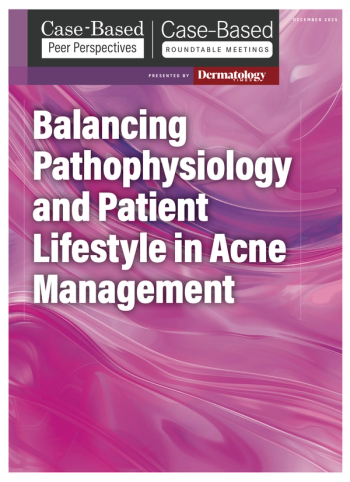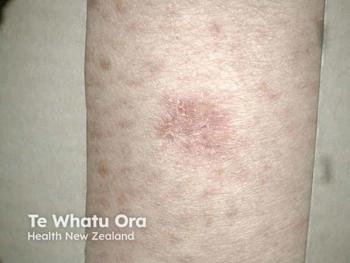Welcome to this week’s roundup of the most insightful and impactful articles from the sister publications of Dermatology Times, all under One MJH Life Sciences. Our network brings together expert perspectives, clinical advancements, and industry updates to keep clinicians informed and ahead of the curve. From cutting-edge treatments to practice management strategies, here’s a look at the top stories shaping the field of medicine.
This week, Psychiatric Times brought readers new phase 4 data from Neurocrine Biosciences that reveals that continued treatment with valbenazine (Ingrezza) significantly improves quality of life and daily functioning in patients with tardive dyskinesia. In a randomized withdrawal study (NCT03891862), patients who continued Ingrezza over 16 weeks reported greater improvements in mobility, anxiety, and self-care, as measured by the EQ-5D-5L and Sheehan Disability Scale. Compared to placebo, Ingrezza patients saw sustained gains in social and family life, with no decline in function during the study’s second phase. These findings reinforce Ingrezza’s role as an effective, long-term option across psychiatric populations.
Pharmacy Times reports that despite a decrease in active drug shortages from 323 to 271 between early and late 2024, nearly half began in 2022 or earlier, highlighting the ongoing nature of the problem. Drug shortages—caused by factors like manufacturing delays, natural disasters, limited raw materials, and quality control failures—can delay procedures, increase medication errors, and force the use of costlier or less effective alternatives. The COVID-19 pandemic and events like Hurricane Helene have further exposed vulnerabilities in the pharmaceutical supply chain, particularly for generics. Shortages also place financial and logistical burdens on healthcare systems, with estimated costs reaching hundreds of millions annually. In response, organizations like ASHP recommend forming dedicated teams and improving communication and planning. Meanwhile, calls continue for greater transparency in the Strategic National Stockpile and improved public access to real-time drug availability data.
According to OncLive, the FDA has approved retifanlimab-dlwr (Zynyz) in combination with carboplatin and paclitaxel for first-line treatment of adults with inoperable locally recurrent or metastatic squamous cell carcinoma of the anal canal (SCAC), as well as monotherapy for those who progressed on or cannot tolerate platinum-based chemotherapy. Approval was based on phase 3 POD1UM-303 trial results showing significantly improved progression-free survival (9.3 vs 7.4 months; HR 0.63; P = .0006) and a 56% overall response rate with combination therapy. The phase 2 POD1UM-202 trial showed a 14% response rate with monotherapy. Both studies demonstrated manageable safety profiles, offering a meaningful new option for a historically underserved patient population.
Research presented by Contagion Live highlights the launch of NevBioVie’s phase 2 ADDRESS-LC trial evaluating bezisterim for treating motor and non-motor symptoms in patients with Long COVID who have not been treated with carbidopa/levodopa. Fully funded by the US Department of Defense, the randomized, placebo-controlled study will assess the safety, efficacy, and tolerability of bezisterimin adults experiencing cognitive impairment and fatigue linked to Long COVID. Bezisterimis an orally bioavailable, blood-brain barrier-permeable small molecule that modulates ERK/NFκB/TNF-α pathways without being immunosuppressive. Already in phase 2 studies for Parkinson’s and previously tested in phase 3 for Alzheimer’s, bezisterimmay help address the chronic neuroinflammation underlying Long COVID, a condition affecting an estimated 20 million adults in the US with no currently approved treatments. Findings are expected in the first half of 2026.
This article from LCGC International offers a practical guide to sample preparation (SP) techniques for small-molecule drug substances (DS) and drug products (DP), emphasizing best practices for high-performance liquid chromatography (HPLC) analysis in regulated environments. It covers the "dilute and shoot" method for DS and the "crush, extract, and filter" approach for tablets and capsules, detailing common procedures, challenges, and mitigation strategies. For DS, key steps include accurate weighing (typically 25–50 mg), proper dissolution using sonication or vortexing, and direct transfer into HPLC vials without filtration. For DP, tablets are first crushed or milled, followed by API extraction using appropriate diluents and sonication or shaking, then filtered using 0.45 μm syringe filters. The article stresses that inadequate SP can lead to out-of-specification results and emphasizes regulatory expectations for precision (<1.0% RSD for DS; <2–3% for DP) and validated filtration. While automation has struggled to replace manual techniques due to difficulties in powder handling, traditional methods continue to offer reliable, accurate results for release and stability assays, underscoring their continued relevance in pharmaceutical quality control.
Want to read more on specialty care, pharmacy, industry sciences, and more? Check out MJH Life Sciences full list of brands here.


















